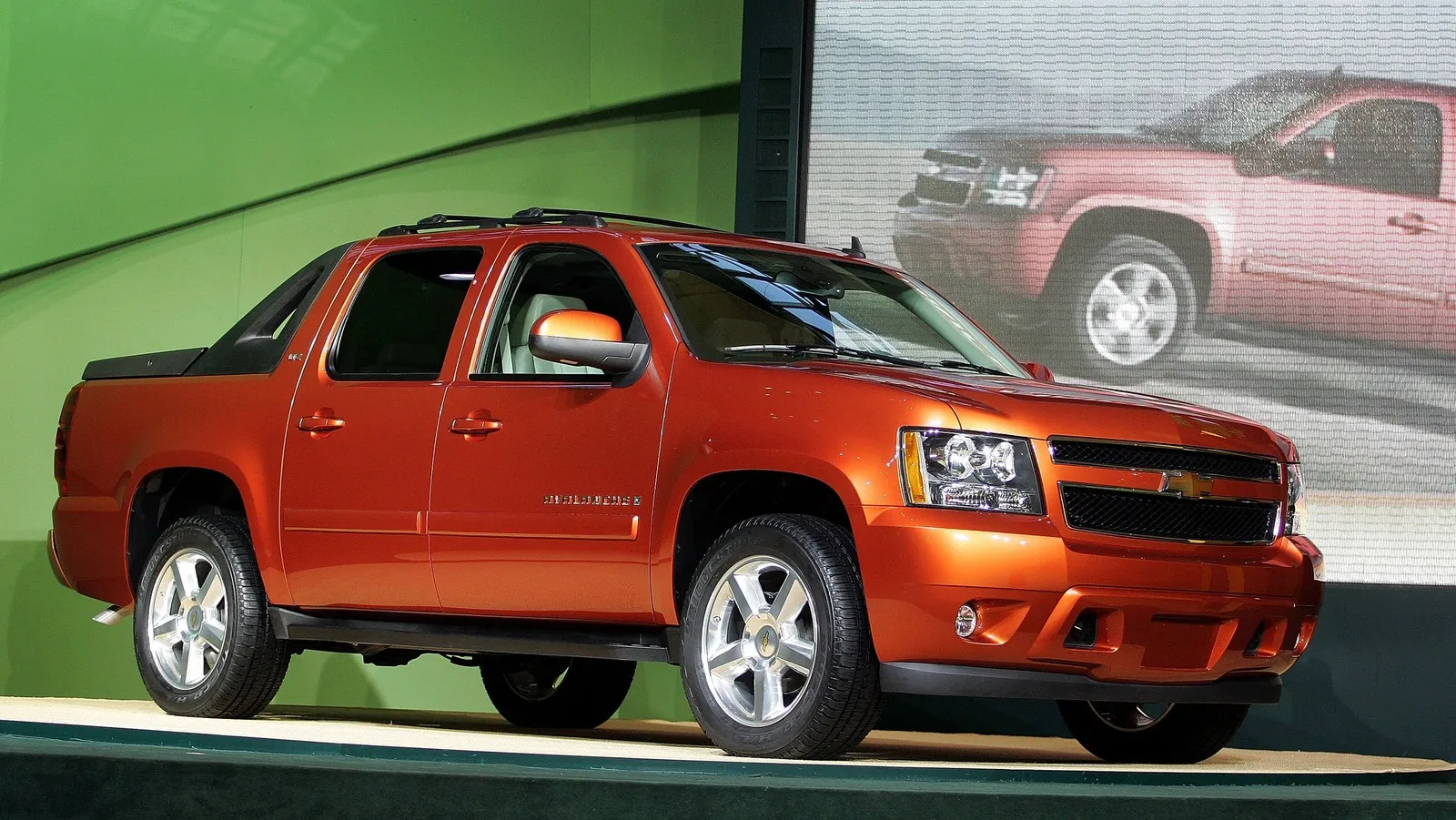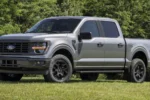Chevrolet Avalanche: A Deep Dive into Its Legacy

Launched in the early 2000s, the Chevrolet Avalanche emerged as a unique hybrid of SUV and truck, captivating drivers with its innovative design and robust performance. Built on the GMT800 platform and sharing components with the Tahoe, Silverado, and Suburban, the Avalanche was introduced in 2001, quickly winning acclaim, including the prestigious Motor Trend Truck of the Year award. Its standout feature, the Convert-A-Cab midgate, offered unparalleled versatility for hauling cargo, setting it apart from traditional vehicles. However, despite initial success, the Avalanche faced challenges that ultimately led to its discontinuation in 2013, leaving behind a legacy of innovation and a devoted following.
| Feature | Details |
|---|---|
| Introduction | The Avalanche was introduced by Chevrolet in the early 2000s on the GMT800 platform. |
| First Generation Launch | Announced in February 2001 as a 2002 model, production began a few months later. |
| Engine Options (First Gen) | Early versions had a 285-horsepower 5.3-liter V8; the 2500 Series featured a 340-horsepower 8.1-liter V8. |
| Unique Features | Known for its Convert-A-Cab midgate for cargo versatility; won 2002 Motor Trend Truck of the Year. |
| Second Generation Launch | Debuted in 2007 using the GMT900 platform; eliminated the 2500 version and body cladding. |
| Engine Options (Second Gen) | Options included a 320-horsepower 5.3-liter V8 or a 366-horsepower 6.0-liter V8. |
| Sales Performance | Sales peaked at 93,482 units in 2003, but declined to just over 20,000 by 2011. |
| Discontinuation Reasons | Discontinued after 2013 due to declining sales and GM’s bankruptcy. |
| Owner Reviews | Generally positive, rated between 4.5 to 4.8 out of 5 stars for versatility and reliability. |
| Impact of Bankruptcy | GM’s financial troubles led to budget cuts and questioning the need for two full-size trucks. |
| Future Prospects | Plans for a third-generation Avalanche based on the K2 platform were abandoned post-bankruptcy. |
The Birth of the Chevrolet Avalanche
In the early 2000s, Chevrolet introduced a unique vehicle called the Avalanche, which combined features of a truck and an SUV. This exciting new model was announced in February 2001, marking its entry as a 2002 model. The Avalanche was built on the GMT800 platform, shared with other popular Chevy vehicles like the Tahoe and Silverado. It quickly gained attention for its innovative design and versatility, offering both two-wheel and four-wheel drive options.
The first-generation Avalanche came with a powerful 5.3-liter V8 engine, providing 285 horsepower. Chevy later released the 2500 Series with an even stronger 8.1-liter V8 engine, boasting 340 horsepower. One of the Avalanche’s standout features was the Convert-A-Cab midgate, allowing owners to expand the cargo space easily. This unique capability contributed to its success and earned it the title of Motor Trend Truck of the Year in 2002.
The Evolution of the Avalanche
In 2007, Chevrolet launched the second-generation Avalanche, which was built on a new platform called GMT900. This model improved upon the original by removing the heavy plastic body cladding that many found unattractive. The new Avalanche still combined the best features of both the Suburban and Silverado, but now buyers could choose between two powerful V8 engines, including a 320-horsepower 5.3-liter and a 366-horsepower 6.0-liter.
Despite its appealing design and features, the Avalanche faced challenges in the market. Sales peaked in 2003, but by 2011, numbers had dropped significantly, leading to its discontinuation after the 2013 model year. While the Avalanche never matched the sales of the Silverado, it earned praise from owners for its reliability and versatility, with many giving it high ratings for performance and comfort.
The Legacy of the Chevrolet Avalanche
Even after its discontinuation, the Chevrolet Avalanche left a lasting impression on its owners and the automotive industry. Many drivers appreciated its unique blend of truck and SUV characteristics, and reviews often highlighted its dependability and spaciousness. Owners frequently commented on how well the Avalanche performed over the years, with many stating it felt like it could run forever, even after years of use.
The Avalanche’s design and innovative features, particularly the midgate, have influenced newer models like the 2024 Chevy Silverado EV, creating a connection between past and present. Although the Avalanche was phased out due to financial challenges at GM, its memory lives on through enthusiastic fans and the lessons learned from its unique approach to vehicle design.
The Design Evolution of the Chevrolet Avalanche
The Chevrolet Avalanche underwent significant design changes over its production run, initially debuting with a unique truck/SUV hybrid style that set it apart from other vehicles in the market. The first-generation model, characterized by its plastic body cladding, was both praised and criticized for its unconventional aesthetics. However, the second-generation Avalanche released in 2007 shifted to a sleeker design, eliminating the bulkiness of plastic cladding, thus appealing to a broader audience looking for a more refined appearance while maintaining its rugged utility.
This design evolution not only enhanced the Avalanche’s visual appeal but also improved its aerodynamic efficiency. The new GMT900 platform provided a solid foundation for better handling and a smoother ride. As consumer preferences evolved, Chevrolet recognized the need for a balance between style and functionality, and the revamped Avalanche reflected this understanding. By focusing on a more cohesive design that merged the best features of trucks and SUVs, Chevrolet aimed to keep the Avalanche relevant in a competitive market.
Performance and Specifications of the Avalanche
The Chevrolet Avalanche was known for its impressive performance, particularly with its powerful V8 engines. The initial release featured a 5.3-liter Vortec V8, delivering 285 horsepower, which provided sufficient power for daily driving and light towing. Later models introduced a more robust 8.1-liter V8 engine with 340 horsepower, catering to those seeking enhanced performance for heavier loads. The availability of both two- and four-wheel drive configurations allowed drivers to choose their preferred driving experience, whether for off-road adventures or urban commuting.
In the second generation, the Avalanche continued to impress with two V8 engine options: a 320-horsepower 5.3-liter and a more powerful 6.0-liter that produced 366 horsepower. This variety ensured that buyers could select a model that best matched their performance needs. Coupled with its innovative Convert-A-Cab midgate, which allowed for versatile cargo configurations, the Avalanche remained a top choice for those needing both power and practicality in a vehicle. This blend of performance and functionality contributed to the Avalanche’s positive owner reviews.
The Market Impact and Legacy of the Avalanche
Despite its initial success, the Chevrolet Avalanche faced challenges in maintaining its market position against competitors like the Silverado and Suburban. Sales peaked in 2003, but by 2008, they had significantly declined, illustrating the shifting consumer preferences toward more traditional pickups and SUVs. The Avalanche’s unique design and hybrid functionality never fully captured the mainstream market, which ultimately contributed to its discontinuation in 2013. Its sales figures, though respectable, were unable to rival the more established models in Chevrolet’s lineup.
The legacy of the Avalanche lives on through its unique design and innovative features, which continue to influence modern pickup trucks. The return of the midgate concept in the 2024 Chevy Silverado EV highlights the Avalanche’s impact on Chevy’s engineering and design philosophy. While the Avalanche may not have achieved lasting commercial success, it paved the way for future models that blend versatility with performance, ensuring that its spirit endures within the Chevrolet brand.
Challenges Faced by the Avalanche During Production
The Chevrolet Avalanche encountered several challenges throughout its production, primarily stemming from GM’s financial struggles. The company’s bankruptcy in 2009 led to intense scrutiny of vehicle lineups, resulting in tough decisions on which models to prioritize. The Avalanche, despite its loyal following, was seen as redundant alongside the Silverado, leading to its eventual discontinuation. This internal reassessment highlighted the difficulties of maintaining a niche vehicle in a market dominated by more traditional options.
Moreover, the Avalanche’s production faced hurdles related to market demand and consumer preferences. As the automotive landscape shifted, the need for unique vehicles like the Avalanche diminished, especially as buyers gravitated towards conventional trucks and SUVs. The combination of budget cuts and a reevaluation of production strategies ultimately sealed the fate of the Avalanche, illustrating the complexities faced by automakers in adapting to changing market dynamics.
Frequently Asked Questions
What is the Chevrolet Avalanche and when was it first made?
The **Chevrolet Avalanche** is a unique vehicle that combines features of a **truck** and an **SUV**. It was first introduced in **2001** as a **2002 model**.
Why was the Avalanche considered one of Chevy’s strangest vehicles?
The Avalanche had a special **truck/SUV body style** and an innovative feature called the **Convert-A-Cab midgate**, allowing for flexible cargo space. This uniqueness earned it a spot among Chevy’s **strangest vehicles**.
What engines were available in the first-generation Avalanche?
The first-generation Avalanche offered a **5.3-liter V8** engine with **285 horsepower** and the **8.1-liter V8** engine with **340 horsepower** in the **2500 Series** model.
Why did the Chevrolet Avalanche stop being made?
The Avalanche was discontinued after the **2013 model year** due to **declining sales** and **financial issues** at GM, mainly because it couldn’t compete against other models like the **Silverado**.
How well did the Avalanche sell during its first few years?
The Avalanche sold **52,995 units** in its first year, peaking at **93,482 units** in **2003**. However, sales dropped significantly in the following years.
What do owners think about the Chevrolet Avalanche?
Owners generally rated the Avalanche **4.5 to 4.8 stars** out of 5, praising its **versatility** and **reliability**, with many appreciating the unique design.
What is the connection between the Avalanche and the 2024 Chevy Silverado EV?
The **2024 Chevy Silverado EV** features a similar **midgate** design to the Avalanche, creating a **spiritual connection** between the two models.
Summary
The content outlines the history of the Chevrolet Avalanche, introduced in 2001 on the GMT800 platform, known for its unique truck/SUV body style and innovative midgate feature. The first generation gained acclaim, winning the 2002 Motor Trend Truck of the Year award, despite declining sales over time. The second generation debuted in 2007 with design improvements but was discontinued in 2013 due to poor sales and financial challenges faced by GM. Owner reviews highlighted the Avalanche’s versatility and reliability, although it never significantly threatened the sales of the Silverado or Suburban, leading to its eventual phase-out.






